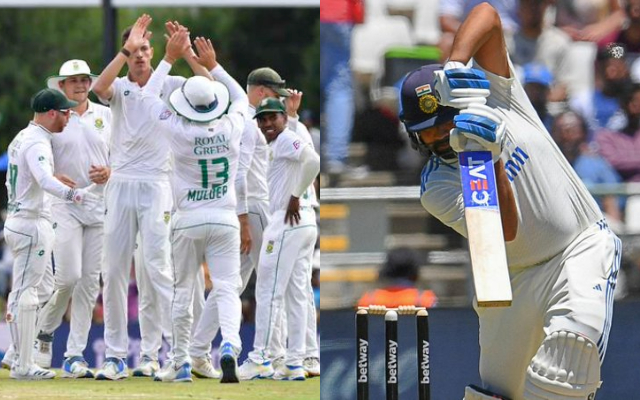
Sometimes, when 23 wickets fall in a torrent, the desire to reach out for the remote and search for defensive technique nuggets can be compelling. India versus South Africa in Cape Town on Day 1 of the second Test was one such day. There was an endless procession of batters, which left the producers of highlights packages with the task of showing the fall of wickets.
As someone who has seen the cricket ball drop at the legendary Sunil Gavaskar’s feet, when he defended short-pitched deliveries from the fastest of bowlers and remained stationary, it was hard not to be shaking his head in disbelief when the left-handed Yashasvi Jaiswal played a delivery from Kagiso Rabada on to the stumps.
And as someone who has watched Rahul Dravid leave countless deliveries outside his off-stump with confidence, it was hard on Wednesday to keep raising eyebrows as batter after specialist Indian batter fell to uncertainty — mostly to edged or gloved catches. This track and the bowling one must hasten to add, demanded Dravid’s level of concentration and temperament.
Shubman Gill and Shreyas Iyer, expected to be the bulwarks of Indian Test batting in the years ahead, were dismissed when they offered tentative blades to deliveries they may have defended better or left alone. Then again, the vastly experienced Rohit Sharma and Virat Kohli also edged catches when defending, while Ravindra Jadeja was caught by surprise by Lungi Ngidi’s extra bounce.
If the lack of defensive skills was palpable and worthy of lament, India’s woes were compounded by KL Rahul’s injudicious shot selection. Among the most complete Test bats in the Indian ranks, he fell attempting an uppercut over the slip cordon only to be done in by copious bounces that Ngidi generated.
When the bowlers over-pitched, the batters could drive with a measure of comfort. Counterattack and innovation can be key elements in a batter’s approach against this combination of pace, bounce and movement. But, rife with exciting possibilities, it also involves the risk of losing the wicket.
For the Latest Sports News: Click Here
Tea-ing Off With RevSportz || LIVE https://t.co/lNArP41wZ8
— Boria Majumdar (@BoriaMajumdar) January 4, 2024
Leaving the ball alone is a vital part of a batter’s armoury in Test cricket. And that would stem basically from a complete awareness of where the off-stump is. A track that is loaded in favour of the bowlers demands impeccable batting, especially when the attack makes the most of the assistance on offer.
Late on Wednesday, Aiden Markram showed that he could defend with confidence, showing the bat-maker’s label to nearly every delivery he played. When play resumes on Thursday, he can be expected to return with a similar resolve to frustrate the attack by staying away from temptation and denying space in his mind for cobwebs of doubt, to cause havoc at the crease.
However, when India chase a target, batters will be aware that the great challenges they face present them with the chance to show great skills. After two successive innings of not batting through 35 overs, they will want to make amends with an approach that indicates a willingness to adapt and overcome the conditions.
Indeed, batters have to step up if India are to do justice to the impeccable length and line that Mohammed Siraj and his fellow fast bowlers hit, on what may end up being branded a dubious track. And they can start by shedding the tentative approach, even if it means that they would look ugly and not the attractive stroke makers that each one of them is.
Just as critics and fans cannot indulge in nostalgia when watching an intense battle unfold, the batters cannot afford to sustain an approach that has worked for them in the past but has been disastrous in Test matches in South Africa. It is this mindset change that Dravid the coach will have to inject in the specialist batters if the team has to level the short series.
Also Read: Cape Trap 23: India, South Africa Witness Unprecedented Wicket-tumbling Drama




